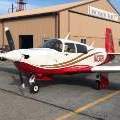Biggest Wind Takeoff/Landing
Maximum Wind For Mooney
54 members have voted
-
1. What is the most wind you will choose to takeoff/land with?
-
0-51
-
6-101
-
11-151
-
16-205
-
21-2511
-
26-3014
-
31-357
-
36-409
-
41-504
-
51+1
-
-
2. What's the max crosswind you will takeoff/land with?
-
0-50
-
6-103
-
11-1514
-
16-2021
-
21-257
-
26-302
-
31-353
-
36-402
-
41-501
-
51+1
-
-
Members Online


Recommended Posts
Join the conversation
You can post now and register later. If you have an account, sign in now to post with your account.